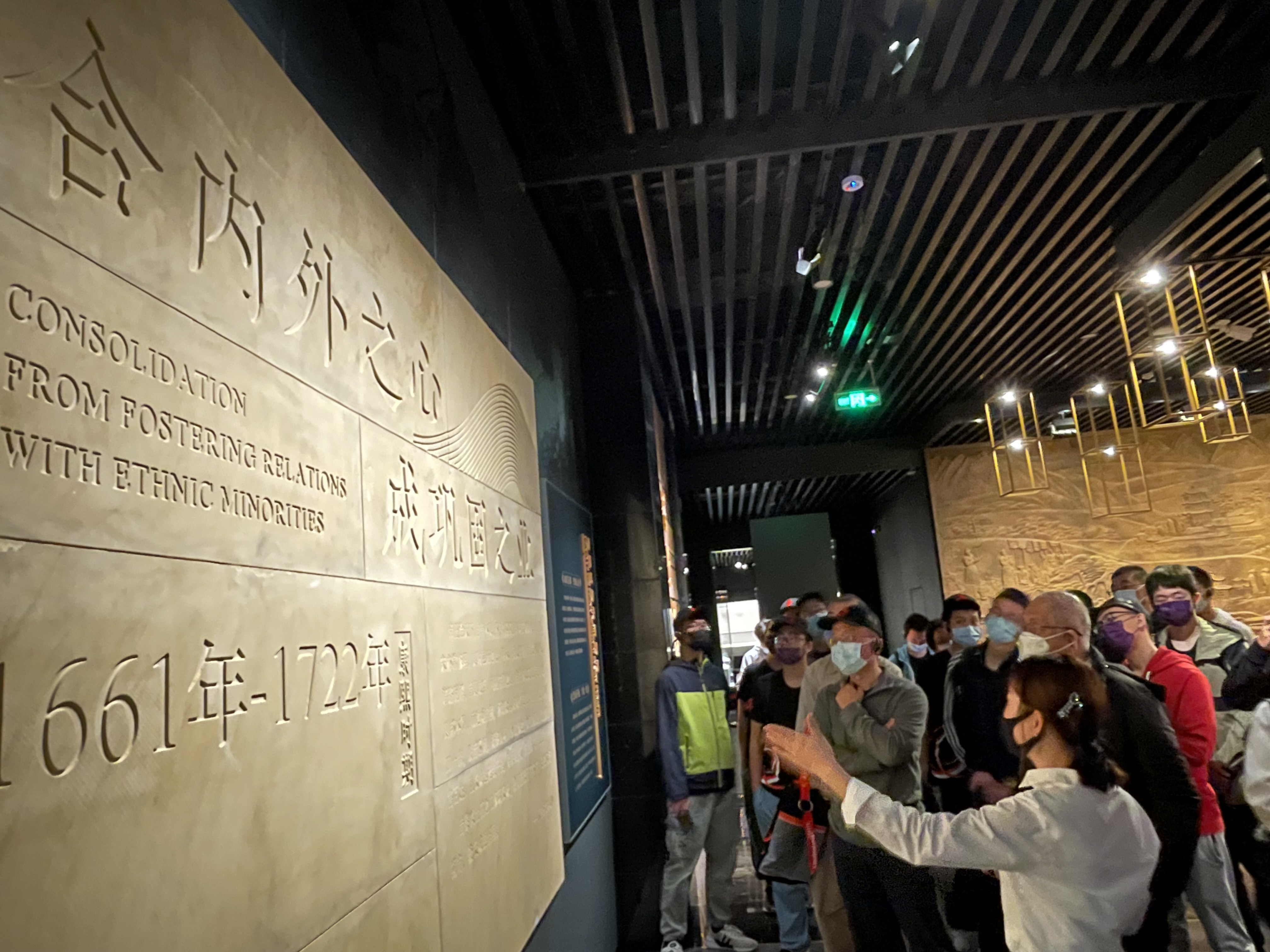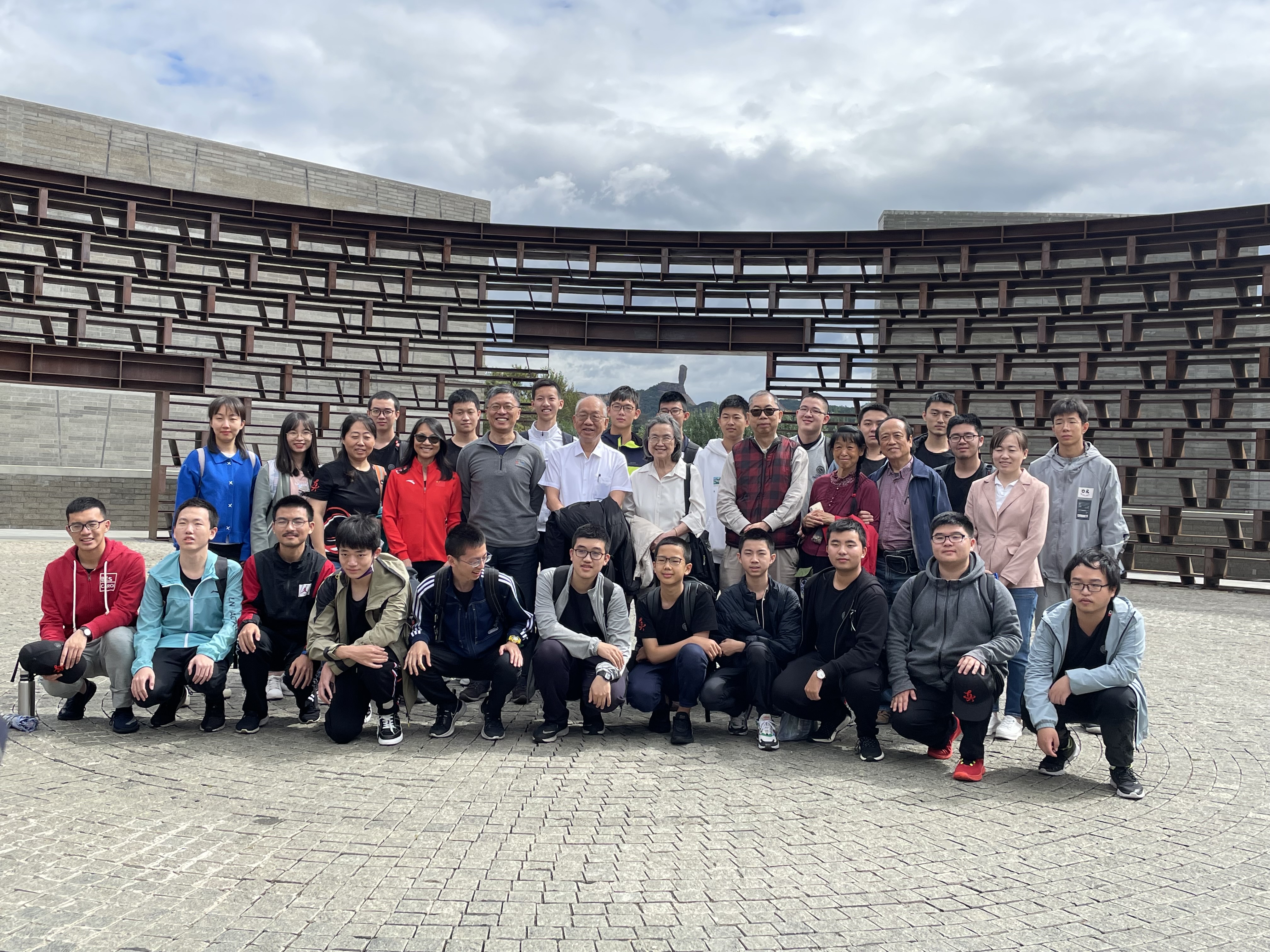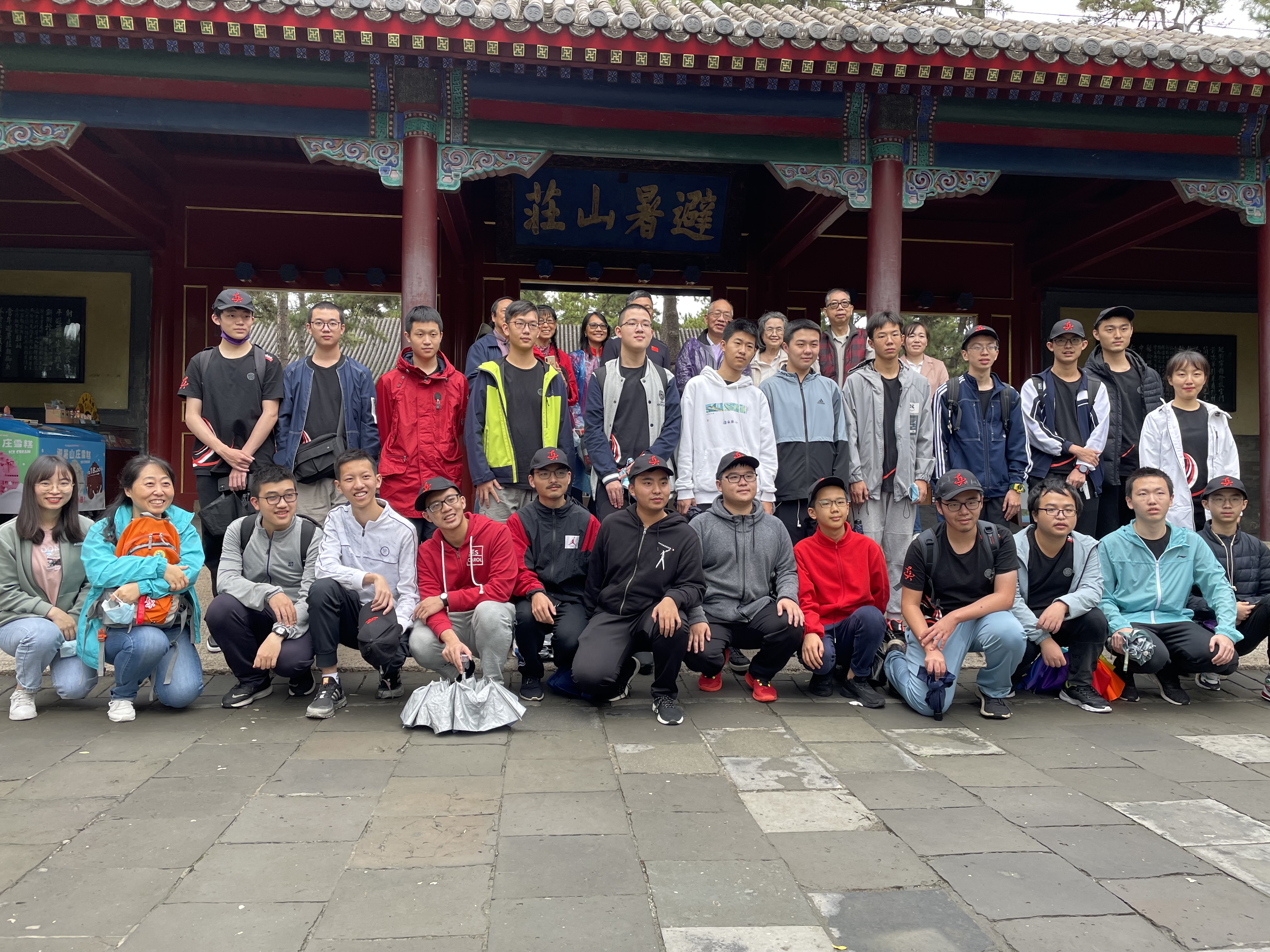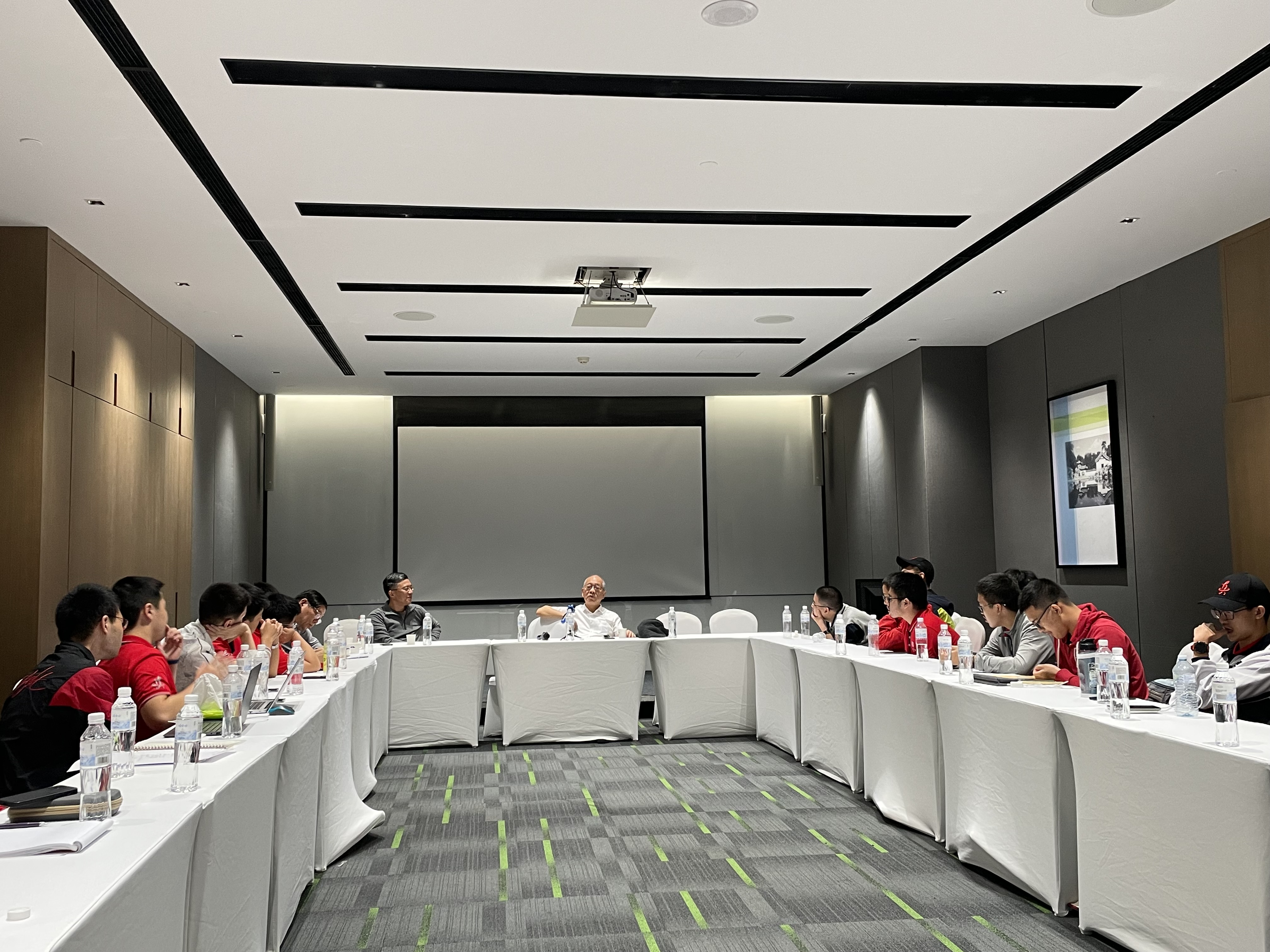Chinese history study tour is an important part of the culture of Qiuzhen College. “Appreciating the past and knowing the future, and continuing to open up the future” is the philosophy that Qiuzhen College has always adhered to. Therefore, on the occasion of the Mid-Autumn Festival reunion in September 2021, Shing-Tung Yau, Dean of Qiuzhen College, led the students and teachers of Qiuzhen College to Chengde, Hebei Province, to have a study tour. The students and teachers learned more about the wisdom of the Chinese civilization and revisited the history of the unification of Chinese multi-ethnic people.
Qiuzhen College Chinese History Study Tour—In Chengde
Chengde, a city where Manchu, Mongolian, Han, and Tibetan are multi-ethnic, is one of the birthplaces of the Hongshan Culture of China, taking the meaning of “bearing the virtue of the ancestors”. In the Qing Dynasty, Chengde Mountain Resort was known as the “second political center”, and now, Chengde is also a famous historical and cultural city in China. Chengde Mountain Resort and its outlying temples are important historical sites witnessing the formation of a Chinese multi-ethnic unified country.
During the tour, the students and teachers of Qiuzhen College visited the Chengde Intangible Cultural Heritage Exhibition Center, the Puning Temple, the Temple of Putuo Dzogchen, the Chengde Museum, and the Chengde Mountain Resort.
We Stopped by to Visit
Chengde Intangible Cultural Heritage Exhibition Center displayed to the world various intangible cultural heritage such as Fengning Manchu paper cutting, Kuancheng beigan (a dance), Ergui wrestling, whirling flower, cloth paste painting, etc. These intangible cultural heritages are not only the art display but also the embodiment of history and culture. Through the accumulation of time, the continuous improvement of each skill presents the energy of Chinese traditional culture.
Puning Temple is a Han Tibetan temple built during the Qianlong period of the Qing Dynasty. The three steles in Puning Temple are written in four languages: Han, Manchu, Mongolian and Tibetan. After the rebellions of Dawazi and Amarsana were annihilated by the Qing Dynasty, Emperor Qianlong held a banquet in the summer resort, and built Puning Temple in the north. In the Qing Dynasty, Puning Temple represented national unity and was the link between the Qing government and ethnic minorities. Nowadays, Puning Temple continues to carry its importance as a religious shrine while undertaking the important task of national unity and cultural intermingling, showing the scene of Chinese multi-ethnic common prosperity and development.
Putuo Zongcheng Temple was a Buddhist temple built by Emperor Qianlong of the Qing Dynasty to celebrate his 60th birthday and the 80th birthday of Empress Dowager Chongqing. It was built after imitating the Potala Palace in Lhasa, Tibet, so it was also called the little Potala Palace. Putuo Zongcheng is a Chinese version of Tibetan Potala, which means holy land of Guanyin. In the Qing Dynasty, the leaders of various ethnic minorities in the frontier gathered in Chengde to hold grand birthday celebrations. Emperor Qianlong also met the Tuerhu leader Obashi here. There was an unprecedented situation of national unity in Putuo Zongcheng temple.
The Chengde Museum has more than 10,000 national cultural relics, showing the historical process of ethnic integration by unearthed utensils and antique buildings. The teachers and students of Qiuzhen College also visited the exhibition, experienced the centripetal force of Chinese civilization and the power of national unity in history, and understood Chengde’s historical and political position of “uniting the hearts of the inside and the outside to become a cause of consolidation”.

Qiuzhen’s students and teachers visit the museum

Group photo of Qiuzhen’s students and teachers
Built in 1703 and taking 89 years to complete, the Chengde Summer Resort was an ancient Chinese imperial palace that not only served as a summer resort for the emperor during the Qing Dynasty, but was also the main place where the Qing emperor dealt with ethnic affairs and had an important political status in history. The summer resort reflects the prosperity and gradual decline of the Qing Dynasty. Emperor Qianlong received the first British mission to China here to show the strong Qing Dynasty. Emperor Xianfeng signed several unequal treaties such as the Sino Russian Beijing treaty here, representing the gradual decline of the Qing Dynasty.
The summer resort and the outlying temples witnessed the history of multi-ethnic unity in the Qing Dynasty. The teachers and students of Qiuzhen College walked through the vast sea of forests, stood at the top of a high mountain, looked up at the Puning Temple and walked past the yurts, as if the historical multi-ethnic unity and collective congratulations to the Qing Dynasty were floating in front of their eyes.

Group photo in front of the Mountain Resort
We Gather Together to Communicate
To seek truth and learn from history, we should combine listening, learning, and thinking, measure the length of history with our feet, listen to the voice of history with our ears, and think about the profound meaning of history with our brains.
At the Chengde Museum, students and teachers listened to a lecture on the history and culture of Chengde and learned more systematically about the history of Chengde's development and how it seized the opportunity of timing, location, and people to become the second political center of the Qing Dynasty.
After dinner, Mr. Yau had a discussion with the students about their feelings on the study tour in Chengde and how they have been studying since the beginning of the new semester. The students took turns to share their fall semester course selections, their feelings about the first two weeks of classes, and some questions they had during the current study period. Mr. Yau first emphasized to the students that the primary task of the students at this stage is to lay a solid foundation. In addition to listening to the class, students also need to consciously spend time doing exercises after class, and do not go too far. At the same time, Mr. Yau took the growth experience of several mathematical masters to explain to the students the necessity of developing standardized writing habits and the importance of learning to use rigorous mathematical language to express ideas.
On this tour to Chengde, we were really honored to have Professor Harry Shum, a double-appointed professor at the Institute for Advanced Study of Tsinghua University, join us. Professor Harry Shum shared his own growth experience and exchanged two points with students. Firstly, Professor Shum expressed his appreciation for the philosophy of cultivating students in the school, although he is a researcher in computer science and application, he knows that the research and development of basic disciplines play a crucial role in various application fields. He hopes that the students can keep their love for mathematics and grow up to be the leaders of basic mathematics and science disciplines in China as soon as possible. Secondly, Prof. Shum told the students that they should learn to ask questions bravely and learn from each other, to transform passive learning into active thinking, and he teasingly said that in the MIT classroom, the teachers would teach students “how to be arrogant”. The purpose is to cultivate the ability and character of students to show themselves confidently and ask questions boldly.

The scene of the teacher-student symposium